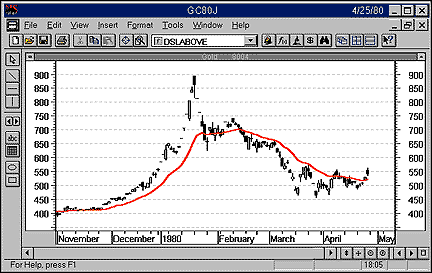"And as you might have expected, my optimistic eye picked out all of the perfect trades and well-chosen examples. Classic historical moves such as gold in the early 1980s, sugar in the mid-1970s, coffee in 1994 and the yen in 1995 sparked my interest (Figures 1 through 4)."I've always found the 20-day moving average useful. It represents approximately one month of trading and provides a simple but accurate representation of the trend direction of a commodity market.

"In most cases, true breakouts occurred only after the entire day's range in price had cleared the 20-day EMA. During an upside breakout, the low of the price bar shouldn't intersect the EMA. For a downside breakout, the high should be lower than the 20-day EMA. Upon further observation, in most cases profitable trends began after the prices cleared the 20-day EMA for at least two days. Therefore, for a buy alert the last two lows should not intersect the 20-day EMA. For sell signals, the highs should not intersect the 20-day EMA.
For more information, click on the sidebar "2/20-day EMA breakout system defined."